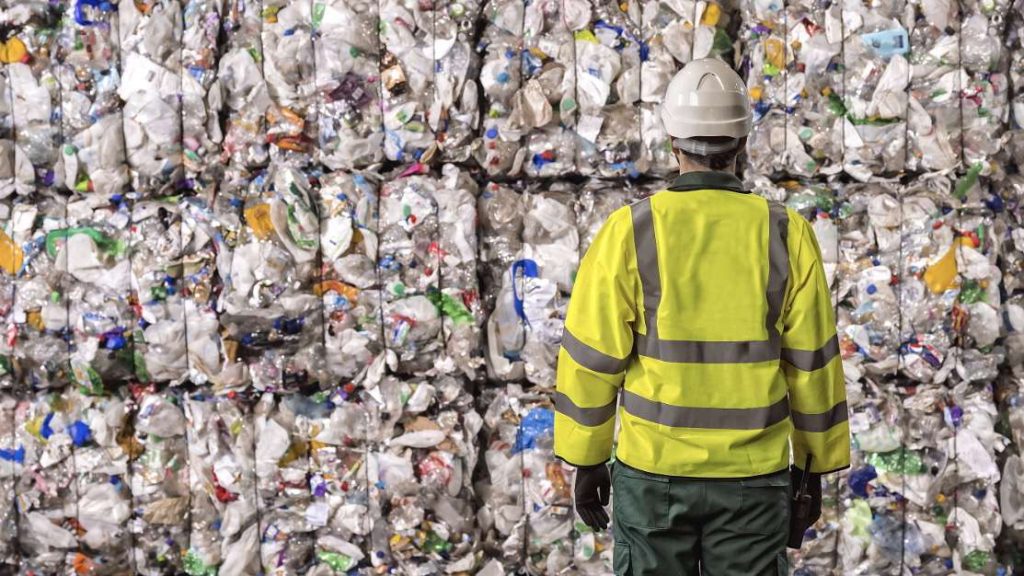The combined effects of population explosion and changing modern living standards have had a cumulative effect in the generation of a large amount of various types of wastes. Solid waste can be classified into different types depending on their source.
· Municipal solid waste (MSW)
· Industrial waste
· Hazardous waste
· Biomedical or hospital waste: as infectious waste.
· Agricultural waste
6.4.1 SOLID WASTE MANAGEMENT:
Municipal Solid Waste (MSW): The term municipal solid waste (MSW) is generally used to describe most of the non-hazardous solid waste from a city, town or village that requires routine collection and transport to a processing or disposal site. Sources of MSW include private homes, commercial establishments and institutions, as well as industrial facilities. However, MSW does not include wastes from industrial processes, construction and demolition debris, sewage sludge, mining waste or agricultural wastes. MSW is also called as trash or garbage. In general, domestic waste and MSW are used as synonyms.
Municipal solid waste contains a wide variety of materials. It can contain food waste (like vegetable and meat material, food, eggshells etc.), which is classified as wet garbage as well as paper, plastic, tetrapack, plastic cans, newspaper, glass bottles, carboard boxes, aluminum foil, metal items, wood pieces, etc., which is classified as dry garbage. The different types of domestic wastes generated and the time taken for them to degenerate is illustrated given below :
TABLE: 1 DOMESTIC WASTES AND THEIR DEGENERATION TIME
| Common domestic wastes | Approximate time taken for degeneration |
| Organic kitchen waste vegetables, fruits | 1—2 weeks |
| Paper, cardboard paper | 15 days—1 month |
| Cotton clothes | 2—5 months |
| Woolen clothes | about a year |
| Metal cans, tin, aluminum | 100—500 years |
| Plastics | 1 million years |
India’s urban population slated to increase from the current challenge of managing municipal solid waste (MSW) in an environmentally and economically sustainable manner is bound to assume gigantic proportions. The country has over 5,000 cities and towns, which generate about 40 million tonnes of MSW per year today. Going by estimates of The Energy Research Institute (TERI), this could well touch 260 million tonnes per year by 2047.
The functional elements of MSW management
The municipal solid waste industry has four components: recycling, composting, landfilling, and waste-to-energy via incineration. The primary steps are generation, collection, sorting and separation, transfer and disposal/utilisation. Waste generation encompasses activities in which materials are identified as no longer being of value and are either thrown out or gathered together for disposal. The functional element of Collection includes not only the gathering of solid waste and recyclable materials, but also the transport of these materials, after collection, to the location where the collection vehicle is emptied. This location may be a materials processing facility, a transfer station or a landfill disposal site. Waste handling and separation involves activities associated with waste management until the waste is placed in storage containers for collection. Handling also encompasses the movement of loaded containers to the point of collection. Separating different types of waste components is an important step in the handling and storage of solid waste at the source. The types of means and facilities that are now used for the recovery of waste materials that have been separated at the source include curbside collection, drop off and buy back centers.
Transfer and transport involves two main steps. First, the waste is transfe rred from a smaller collection vehicle to larger transport equipment. The waste is then transported, usually over long distances, to a processing or disposal site.Today the disposal of wastes by land filling or land spreading is the ultimate fate of all solid wastes, whether they are residential wastes collected and transported directly to a landfill site, residual materials from materials recovery facilities (MRFs), residue from the combustion of solid waste, compost or other substances from various solid waste processing facilities. A modern sanitary landfill is not a dump; it is an engineered facility used for disposing of solid wastes on land without creating nuisances or hazards to public health or safety, such as the breeding of insects and the contamination of ground water. Municipal solid waste can be used to generate energy. Several technologies have been developed that make the processing of MSW for energy generation cleaner and more economical than ever before, including landfill gas capture, combustion, pyrolysis, gasification, and plasma arc gasification. While older waste incineration plants emitted high levels of pollutants, recent regulatory changes and new technologies have significantly reduced this concern.
In USA, EPA regulations in 1995 and 2000 under the Clean Air Act have succeeded in reducing emissions of dioxins from waste-to-energy facilities by more than 99 percent below 1990 levels, while mercury emissions have been by over 90 percent The EPA noted these improvements in 2003, citing waste-to-energy as a power source “with less environmental impact than almost any other source of electricity” (en.wikipedia.org).
Municipal solid waste management is more of an administrative and institutional mechanism failure problem rather than a technological one. Until now, MSW management has been considered to be almost the sole responsibility of urban governments, without the participation of citizens and other stakeholders. The Centre and the Supreme Court, however, have urged that this issue be addressed with multiple stakeholder participation. Cities in India spend approximately 20% of the city budget on solid waste services.
HAZARDOUS WASTES
Hazardous wastes are those that can cause harm to human and the environment.
CHARACTERSTICS OF HAZARDOUS WASTES:
Wastes are classified as hazardous if they exhibit any of four primary characterics based on physical or chemical properties of toxicity, reactivity ignitability and corrosivity.
Toxic wastes
Toxic wastes are those that are poisonous in small or trace amounts. Some
may have acute or immediate effect on human or animals. Carcinogenic or mutagenic causing biological changes in the children of exposed people and animals. Eg: pesticides, heavy metals.
Reactive wastes: reactive wastes are those that have a tendency to react vigorously with air or water are unstable to shock or heat, generate toxic gases or explode during routine management. Eg: Gun powder, nitroglycerine.
Ignitable waste: are those that burn at relatively low temperatures (<60o C) and are capable of spontaneous combustion during storage transport or disposal. Eg: Gasoline, paint thinners and alcohol.
Corrosive wastes: are those that destroy materials and living tissues by chemical reactions. Eg: acids and base
Infectious wastes: included human tissue from surgery, used bandages and hypoderm needles, hospital wastes.
Sources: Chemical manufacturing companies, petroleum refineries, paper mills, smelters and other industries. Plastic industries Thousand of chemicals are used in industries every year. When used incorrectly or inappropriately they can become health hazards. PCBs (Polychlorinated biphenyls) are resistant to fire and do not conduct electricity very well, which makes them excellent materials for several industrial purposes. Rainwater can wash PCBs out of disposal areas in dumps and landfills thus contaminating the water. PCBs do not break open very rapidly in the environment and thus retain their toxic characteristics. They cause long-term exposure problems to both human and wildlife. Many household chemicals can be quite toxic to humans as well as wildlife. Most of the dangerous substance in our homes are found in various kinds of clearness, solvents and products used in automotive care. When these products are used incorrectly they have the potential to be harmful.
Effects: As most of the hazardous wastes are disposed off or in land, the most serious environmental effect is contaminated ground water. Once ground water is polluted with hazardous wastes, it is very often not possible to reverse the damage. Pesticides form residues in the soil that are washed into streams which then carry them forward. The residues may persist in PCBs (poly chlorinated biphenyls) are concentrated in the kidneys and liver and cause damage; they cause reproductive failure in birds and mammals .The soil or in the bottom of lakes and rivers. exposure can occur through ingestion, inhalation and skin contact, resulting acute or chronic poisoning. Lead, mercury and arsenic are hazardous substances which can often referred to as heavy metals. Most of the lead absorbed by people is stored in the bones. Lead can effect red blood cells by reducing their ability to carry oxygen and shortening their life span. Lead may also damage nervous tissue, resulting in brain disease. Mercury is used in production of chlorine and as a catalyst in the production of some plastics. Mercury build up in body over long period of time is known to cause brain damage. Minamata disease occur due to mercury poisoning. Vinyl chloride is a chemical that is widely used in plastic manufacture. A long continuous exposure in humans can cause deafness, vision problem circulation disorders and bone deformities.
Control: common methods for disposing of hazardous wastes are land disposal and incineration. Industries need to be encouraged to generate less hazardous waste in the manufacturing process. Although toxic wastes cannot be entirely eliminated, technologies are available for minimizing by recycling and treating the wastes. Integrated pest management practices (IPM) reduce the usage of pesticides. Substitute the use of PCBs and vinyl chloride with chemicals that are less toxic. Polyvinyl chloride use can be lowered by reducing the use of plastics.
INDUSTRIAL WASTES
These contain more of toxic and require special treatment.
Source: Food processing industries, metallurgical chemical and pharmaceutical unit’s, breweries, sugar mills, paper and pulp industries, fertilizer and pesticide industries are major ones which discharges toxic wastes. during processing, scrap materials, tailings, acids etc.
Effect: Most common observation is that the health of the people living in the neighborhood of dumping sites is severely affected. The exposure may cause disorders of nervous system, genetic defects, skin diseases and even caner. The liquid effluents discharged by the industries contain inorganic and organic pollutants and they enter into water bodies causing destruction of fish, formation of sediments, pollution of ground water and release of foul odours.
Control: Waste minimization technologies have to be developed. Source reduction, recycling and reuse of materials need to be practiced on a large scale. Hazardous waste should not mix up with general waste. Source reduction involves altering the design, manufacture or use of products & materials to reduce the amount and toxicity of materials that get thrown away. Local communities and voluntary organizations should educate the industrialists as well as the public about dangers of pollution and the need to keep the environment clean. Land filling, incineration & composting technologies to be followed. Biogas is obtained from solid waste treatment of industrial and mining waste is done for the recovery of useful products.
A classic case study of waste mismanagement: The Love Canal tragedy
In 1892, a small area near Niagara Falls, New York, USA was dug up and designed as a route for transportation and for the production of hydroelectric power connecting the lower and upper reaches of the Niagara River, called the love canal (named after William T. love). The process was left incomplete and eventually became a site for waste disposal. A Plastic manufacturing chemical company disposed off its wastes in sealed steel drums during the years 1940 to 50. More than 20,000 tons of 80 different chemicals were dumped in the area. In 1953, the company sold the land to the city of Niagara Falls. Subsequently, many residences and an elementary school were built on the land. The tragic story of the love canal incident started after twenty years due to heavy snow and
rains. The sealed plastic wastes had corroded the drums and started leaking into the soil, buildings, water etc. Children in the school were shocked to see their rubber shoe soles disintegrating and they also suffered burns. This caused the officials to look into the matter and it was found that the wastes contained lot of carcinogens and a wide array of toxic organic compounds like benzene, chloroform, dichloroethylene etc. The clean up of the Love canal totally amounted to about 275 million US dollars. The schools and homes were destroyed, the families relocated, the soil was completely covered with compacted clay, the wastes were diverted to a treatment plant, the water pipes were blocked with barriers, etc. This was a classic example of solid waste mismanagement.
Toxic materials pose significant health hazards and dwindle our precious bioreserves. Proper and timely management of waste is very important in the good interest of our environment, and us. The above classic case study proves that management of wastes is a very serious business and if not handled with care, the cleaning up of improperly disposed wastes can cause loss/damage to human life and be extremely costly. It therefore makes sense to plan the disposal of various kinds of wastes in a scientific manner.


